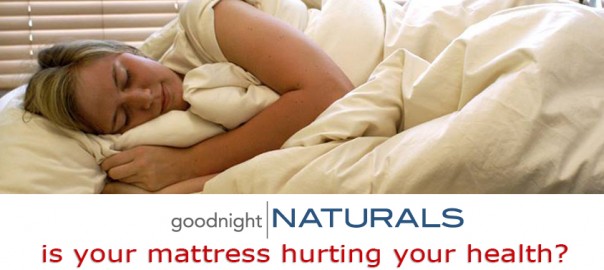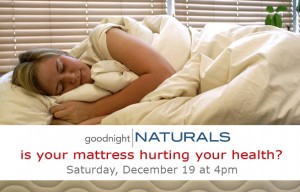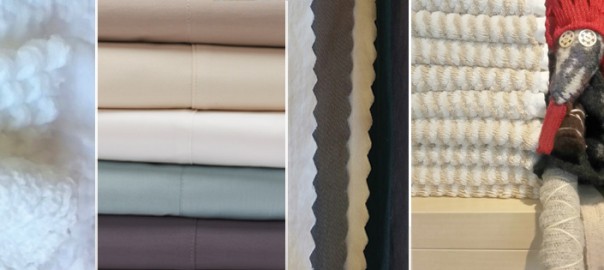A good night’s sleep is far more nuanced than simply putting in your seven to nine hours and calling it a day. Good, healthy sleep means feeling rested upon waking. It means not having chronic bad dreams or nightmares. And it turns out that the difference between a smile-filled slumber and a fearful one isn’t entirely up to chance.
According to a group of French researchers writing in the Journal of Sleep Research, all people dream when they sleep, even people who think they don’t. But is there a correlation between good sleep and good dreams? We partnered with Sleep Number to dig into this and other dream-related questions: Does sleeping well lead to more — or more pleasant — dreams? Does sleeping poorly lead to bad dreams? The answers to each of these queries, we discovered,, are yes … and no.
factoid 2 Clinically speaking, a “good night’s sleep” is considered one that consists of seven to nine hours of quality, uninterrupted snooze time — barring the simple activities that wake us during the night like using the restroom, getting a glass of water or even turning over.
The American Academy of Sleep Medicine describes the experience of sleep as unfolding in four phases, culminating in REM (rapid eye movement) sleep. The stages repeat in order every 90 to 110 minutes on average. Stages 1 and 2 are characterized by a progression from light sleep through a gradual slowing of brain waves. Stage 3 is the period of sleep when we’re the most conked out. If you’ve ever had a hard time waking someone up, he or she was probably in this third stage of the sleep cycle. The fourth stage, REM sleep, is when our breathing rate quickens and our eyes move under our eyelids. This is the stage during which most people dream, especially when it occurs in the latter half of the night. We can also dream in the other stages of sleep, but scientists don’t have a good idea of how often or how much.
What Do Dreams Do For Our Health?
Studies show that dreaming is good for us. Rubin Naiman, a sleep and dream expert on the clinical faculty of the Arizona Center for Integrative Medicine, says, “Good dreaming contributes to our psychological well-being by supporting healthy memory, warding off depression, and expanding our ordinary limited consciousness into broader, spiritual realms.” A study at Harvard Medical School concluded that dreaming also helps us consolidate memories and retain information.
In the book The Mind in Sleep, Arthur M. Arkin cites a study in which subjects were deprived of REM sleep intermittently over a period of time. The study concluded that there is a “close association between REM sleep and dream recall” and a “positive correlation between REM density and the subjects’ active involvement in dramatic dreams.” In other words, the longer your REM cycle, the more intense your dreams.
“If you have very poor sleep, you may not even dream at all,” says John S. Antrobus, a professor of psychology and sleep research at the City College of New York, now retired. “But it depends on why you’re not having a good night’s sleep.” According to Antrobus, factors that can lead to poor sleep include consuming alcohol before bed, experiencing stress and having a disturbing day. Other causes include keeping electronics like cell phones, televisions or computers in the bedroom; eating, exercising or consuming caffeine too late; having an uncomfortable bed or sleeping environment; and keeping an inconsistent sleep schedule.
So, “good” sleep — or sack time that includes REM sleep — leads to an active dream life, and in turn an active dream life is good for us. But when it comes to the relationship between getting a good night’s sleep and having good dreams, or remembering our dreams better, the science gets murky.
What Things Can Impact Our Dreams?
Several factors influence our ability to remember our dreams (also known as lucid dreaming or dream recall) — from age and gender to specific personality traits — but there is no hard evidence explaining why some people remember their dreams better than others. Often, it seems as if we only remember the dreams we were having right before we wake up. Antrobus, the former sleep researcher, explains that this is related to another cycle of brain activation on which the sleep stages rely. “That larger cycle starts before you fall asleep and leaves you feeling sleepy and wanting to go to bed at night,” he says. That cycle winds down in the hour or so before we wake up, when our brains are most active and we’re having more dreams, “and that’s why you tend to remember more of them.”
Timing, in other words, is everything. “A lot of people only remember their dreams if their alarm clock wakes them up right in the middle of it,” adds Dr. Shalini Paruthi, director of the Pediatric Sleep and Research Center at SSM Cardinal Glennon Children’s Hospital in St. Louis, Missouri. A study conducted at the Lyon Neuroscience Research Center in France supported this theory, concluding that “high dream recallers are more reactive to environmental stimuli [during sleep], awaken more during sleep, and thus better encode dreams in memory than low dream recallers.”
Likewise, there is no evidence-based research as to whether sleep quality affects our ability to remember dreams or control the tenor of dreams. Rather, Paruthi says, “Whatever people are exposed to during the daytime will have an impact on their dreaming at night.”
This is the premise for a technique called imagery rehearsal therapy, which involves visualizing alternate endings to bad dreams 10 to 15 minutes before a person goes to bed each night. “Even thinking about good things to dream as you’re drifting off to sleep can impact [the] dreams that you have that night,” Paruthi explains. “So, you can have a negative impact on your dreams if you’re surrounded or getting exposed to negative things throughout the day. But, on the flip side, you can also have [a] positive impact on your dreams if the last things that you’re thinking about are positive things.”
Deirdre Barrett, author of The Committee of Sleep: How Artists, Scientists and Athletes Use Dreams for Creative Problem-Solving –And How You Can, Too and an assistant clinical professor of psychology at Harvard Medical School, is a firm believer in our ability to influence our own dreams. “The details of how to do it are very different depending on whether you’re trying to induce lucid dreams, whether you’re trying to dream about particular content, or whether you’re trying to dream a solution to a particular personal or objective problem,” she said in an interview with Scientific American.
Whether your goal is to dream about a particular topic or person, change the outcome of your dream, remember your dream, or problem-solve in your dream, Barrett suggests to “first of all think of the problem before bed, and if it lends itself to an image, hold it in your mind and let it be the last thing in your mind before falling asleep.” She also recommends not jumping out of bed right away upon waking up. “Almost half of dream content is lost if you get distracted. Lie there, don’t do anything else. If you don’t recall a dream immediately, see if you feel a particular emotion — the whole dream would come flooding back.”
What Control Do We Have Over How And What We Dream?
Getting a good night’s sleep, Paruthi says, “is the most important thing” we can do to ensure that we dream. First and foremost, that means sleeping in a room that’s dark, quiet and cool (65 to 72 degrees Fahrenheit). Other things we can do to help us sleep better include taking a bath and reading a book before bed; practicing relaxation exercises; avoiding stressful or stimulating activities before sleep; napping early in the day (or not at all); exercising earlier in the day; avoiding alcohol, sugar and large meals before sleep; maintaining a regular sleep schedule; and, as simple as this might sound, going to bed when we’re tired.
While we can’t have 100 percent control over our dreams, there are things we can do to influence them in a positive direction, experts say. Among them: exposure to pleasant smells and sounds while we’re sleeping; avoiding spicy foods; not smoking; eating healthy and exercising regularly; and improving our daytime thought patterns. In simplistic terms, if you want good dreams, sleep well and think happy thoughts.




 Friday, Oct. 23rd
Friday, Oct. 23rd








